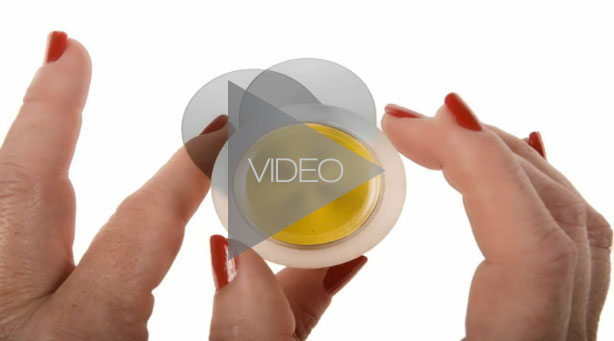
This video demonstrates how simple it is to check for lens stress.

This video demonstrates how simple it is to check for lens stress.
For this month’s Laser Optics article, FSMD brings you the insights of two experts, Todd Jacobson and Dianne Devereaux-Michaels, on the subject of lens stress in laser systems.
FSMD: Why is it important to find stress in a lens?
Jacobson: A damaged focusing lens can cause catastrophic failure to the lens, presenting a health hazard to personnel in the area of the machine, and definitely a major cleanup on the machine. Finding the stress before it happens can save a company thousands of dollars in parts and downtime.
Devereaux-Michaels: The last thing you want to have is the lens stress cause the lens to break in your machine. If it does, it can affect a lot of other things in your machine – the output coupler, the mirrors, the resonator.
FSMD: How do you go about finding stress in a lens before it’s too late?
Jacobson: Typical cutting lens are made of Zinc Selenide (ZnSe). The unstressed crystal structure in a lens contains dipole moments whose sum at their vertex is equal to zero. In the stressed crystal, there are domains where the sum of the dipole moments are not zero and therefore are polarized. When viewed with a polarizer stress tester, these domains will look like shadow lines or darkened regions. The polarizer is setting up diffraction patterns for your eye to see. To detect stress regions in the lens, place the lens between the polarized stress tester and hold in front of a good light source, then slowly rotate the assembly 360 degrees looking for dark regions or distinct patterns.
Devereaux-Michaels: A polarized stress tester is important for a job shop to have on hand. Buy it and keep it in a Ziploc bag with your cleaning supplies, and bring it out whenever you clean the lens.
FSMD: Will cleaning the lens help to prevent stress?
Jacobson: Let’s start with the pros: One school of thought states, “Only clean your lens when it’s dirty.” Doing so will minimize the chance of scratching the thin coating of thorium fluoride on the surface. Scratches will increase light absorption and scatter. Additionally, cleaning optics takes time away from the production schedule.
On the opposing side, failing to periodically inspect the lens could have a multitude of unwanted and potentially costly results. Two conditions can exist: a visibly dirty lens or a lens with a hydrocarbon film not seen by the naked eye. Although you might not see it, you can smell the difference. A clean lens will have no odor while a contaminated lens may take on an odor described as rotten eggs with the intensity depending on the level of contamination.
Regardless of the contamination type, it will cause thermal lensing. This is a condition where the lens starts absorbing more of the precious power we pay extra for when buying our laser systems. The result is a focal point that drifts due to the temperature dependent index of refraction, ultimately causing dross on our parts.
In response to a poor cut that this will cause, the operator will adjust cutting parameters in a futile effort to correct the problem. Unfortunately, he will continue to adjust it, trying to compensate for a forever-changing focal point all the while moving further away from good parameters.
As the operator’s frustration level increases, the manufacturer will get sub-standard parts, and/or extra labor costs to correct the parts. While struggling to get acceptable parts, production levels are reduced and proven cutting parameters lost. Once the operator cleans or replaces the lens, the struggle is only half over. Now the operator will have to adjust parameter settings to get them back to their original position, continuing the time lost in reduced production.
When cutting mild steel with oxygen, the cleaning interval might be once a shift or maybe once a day. However, when cutting with nitrogen assist gas, the typical pressure is three to four times higher at the lens and will accelerate the contamination on it. In this case, depending on the pressure and material, it may need cleaning after several hours. If your cut quality changes over time and you made no adjustments to the machine parameters, it is likely that the lens needs cleaning.
Devereaux-Michaels: You don’t really protect a lens from stress. The coating that the manufacturer applies to the lens is designed to reduce absorption of the laser beam into the lens, so the lens is good as long as the coating is intact. Generally, when the coating goes, it means you’ve been using too abrasive of materials to clean it. You’re taking off too much coating when you’re cleaning the lens, or it’s really, really old, and it might have back-spatter on it, which is burned into the coating. It’s a compromise of the coating that creates your problem at the start.
Once the coating goes, you want to replace the lens. The coating’s job is to deal with the heat and protect the lens from having back-spatter and stuff stick to it. It protects the raw material of the lens underneath. So once that’s compromised, you’re in trouble.
You should be cleaning the lens on a regular basis, though, and the key is to do it with the least invasive material – ethanol or alcohol or something similar. The hydrocarbons are basically oil. You’re in an environment where you’re working with machinery, so there’s going to be certain amounts of oil in the air that will get on the lens. Cleaning it once a day will remove those hydrocarbons.
FSMD: What happens if stress in the lens is ignored?
Jacobson: If it’s ignored long enough, the lens will stress, and it will end in a catastrophic failure. When this happens, start planning for downtime. You can use a polarized stress tester to check for damage.
Catastrophic failure will turn the ZnSe lens into a dangerous yellow powder. This powder is a serious health hazard requiring immediate evacuation of the area. Please refer to an optic manufactures information on this such as Ophir Optic’s MSDS for a complete report.
Besides the health issue from a lens failure, your system will require extended downtime and costly repair to thoroughly clean the debris from your beam delivery guide and undoubtedly replace components in the cutting head.
One of the factors in determining your lens inspection interval is the type of materials you process. This interval should be frequent enough to provide a consistent process to reduce your hourly costs. Lens inspection should be one of the first things your operator checks when there are problems with the cut quality. It’s time well spent considering the alternative.
FSMD: How often should an operator check for stress?
Devereaux-Michaels: Whenever you clean the lens, you should check for stress – so at least once a day. The bottom line is that you’re aware of the fact – better that than running a lens and hoping it’s okay.
FSMD: Once stress is detected, how long before an operator should replace the lens?
Devereaux-Michaels: There’s no way to say for sure. Depending on what you’re cutting, maybe a couple of days if you're cutting at a lower power level or maybe a couple minutes up to hours when cutting at higher power levels. Once stress is detected, you're really rolling the dice if you continue to use the lens. If you are really feeling that lucky, I would suggest that you buy a lottery ticket before you would continue to use the lens. Operators who really know their stuff might be able to say how many more hours they’re going to get out of the lens before it gets really ugly, but it’s really a case-by-case basis.
Along with Ophir Optronics, there are several companies that offer equipment that can detect lens stress.

